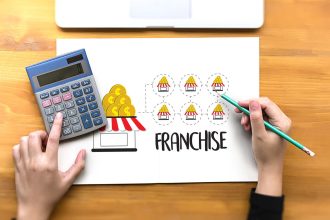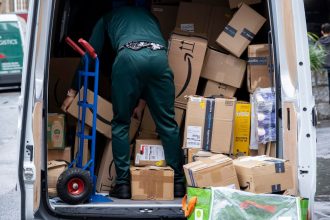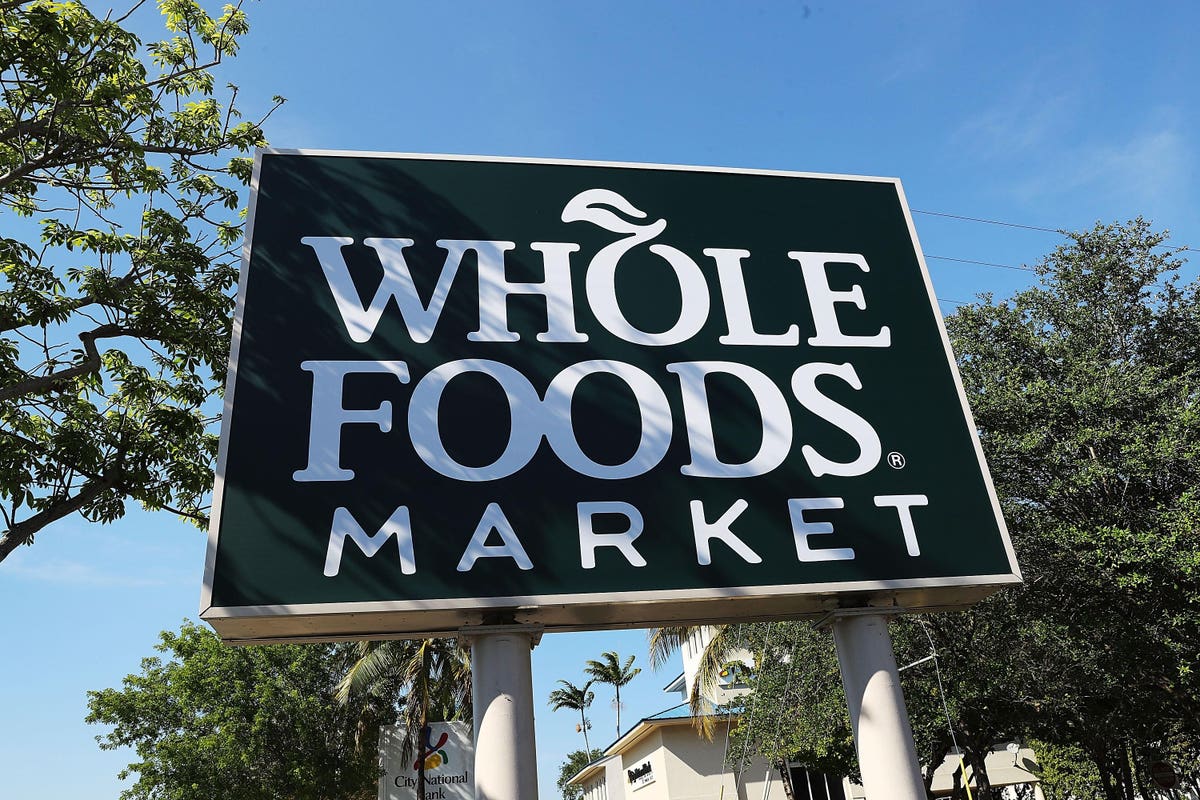When Amazon bought for $13.7 billion Whole Foods Market six years ago — it’s still the biggest price the ecommerce and cloud computing behemoth ever paid for an acquisition — many pundits were scratching their heads.
Whole Foods was, and still is, decidedly more upscale than Amazon’s home-grown grocery concepts. Amazon tried to integrate Whole Foods into the mothership, by installing lockers where consumers and Amazon Prime members could pick up their trash bags and toilet paper, and offered ancillary items such as vegetable peelers and coffee mugs. The effort seemed feeble.
Amazon also claimed that it would lower prices to Prime members displayed on bright yellow signs, and embedded technology into the 500-plus supermarket chain.
Now, Amazon is launching the some of the biggest adaptations since 2017, including offering fresh-food delivery to non-Prime members, remodeling and reimagining stores, and testing highly-computerized warehouses.
In addition, Amazon has opened 60 new locations, including one entirely devoted to filling online orders, a “dark store.” Still, Whole Foods accounts for slightly more than 1% of the national grocery market, according to Numerator. By comparison, Walmart
WMT
KR
Not all of the upscale grocer’s stores are home runs. For example, a unit that opened a year ago in Woodcliff Lake, New Jersey, seems to be struggling. Woodcliff Lake, a high end town that abuts Saddle River, Hillsdale, Park Ridge and Montvale, is a unique case, with an embarrassment of supermarket riches, including Wegman’s, The Fresh Market, Kings and Shop-Rite, in close proximity. Uncle Guiseppe’s, an Italian-focused grocery store, is a few miles further away in neighboring Ramsey. In addition, Aldi opened a store in Ramsey, and Lidl moved into A&P’s former space in Park Ridge.
Wegman’s and Shop-Rite dominate the area, which no doubt looked like a no-brainer in surveys and local demographics. However, Wegman’s offers a wide assortment of national, house-brands and international products served up in a farm-y atmosphere with a model train running on a track close to the ceiling and a rooster crowing every hour on the hour. The Wegman’s complex also boasts The Shops at Van Riper, about two dozen retailers and eateries such as Habit Burger and Chipotle, a spin studio and Ulta, among others. City MD and Chase round out the offerings.
Shop-Rite, which was renovated in the past five years, competes on price. The Fresh Market works on convenience; the store is smaller than most of the others, and offers drive up parking and an interesting assortment of fresh produce, proprietary brands and house brands with a focus on sustainability.
According to reports, Amazon is planning to combine its e-commerce supermarket brands, including Amazon Fresh, Whole Foods and Amazon.com into a single online cart.
Amazon’s acquisition of Whole Foods raised a common fear that Amazon might sell out by relaxing Whole Foods’ strict standards for its assortments. That hasn’t happened — yet — and Whole Foods said it remains committed to its high standards involving sustainability.
“Amazon and Whole Foods Market Announce Acquisition to Close [Deal] This Monday, Will Work Together to Make High-Quality, Natural and Organic Food Affordable for Everyone,” screamed the headline of a BusinessWire press release on August 24, 2017. Most will agree that Whole Foods’ prices haven’t come down, earning it the moniker, Whole Paycheck.
Since the Covid 19 pandemic, Whole Foods has been foundering, struggling to integrate businesses that have little in common and different corporate cultures. Jason Goldberg, chief commerce strategy officer at Publicis, an advertising agency, said the combination surprised him.
Amazon didn’t buy Whole Foods to learn about the grocery business. Amazon, which is delving deeper into the world of brick-and-mortar retail, with a focus on groceries, wanted a quick tutorial. Revenue at Amazon’s physical stores climbed 12% in the recent second quarter, while online sales dropped. That marks a change from the prior few years, when Amazon’s physical stores lagged the overall retail business.
Amazon’s second quarter earnings estimates by analysts almost doubled today after earning reports from the technology sector showed improvement in everything from core online businesses to digital advertising, after logging slow growth. UBS said, “Amazon delivered an inflection quarter, and initiated a “Buy” rating.
Aside from the food business, Amazon recently shuttered 68 stores, including all of its 4-star, Amazon Books and Pop Up shops. Amazon centralized some operations, which had previously been handled by individual stores, to Whole Foods’ Austin, Texas, headquarters. But it hasn’t become a conventional supermarket as some predicted. Whole Foods said, that rather than swapping out regional suppliers for bigger names, the company has added thousands of local brands since 2017, a 30% increase since before the Amazon deal was consummated.
Each region has teams of full-time “foragers″ or buyers, who scour the market for new local products. Whole Foods said the model gives it flexibility to buy smaller brands, which can show up in just a few stores, while the brands find their sea legs, instead of having to supply products throughout the chain. Amazon uses its data tools to help determine what brands get sold in what stores.
“Going into a Cupertino – Whole Foods’ inaugural store — is a very different experience than walking into a Los Altos or Los Gatos store,” said a Whole Foods executive. There’s also a new accelerator program for local makers to nab a place on shelves of local stores, and certified training programs to turn hundreds of Whole Foods workers into bonafied fishmongers and cheese aficionados.
Since acquiring Amazon, Whole Foods has doubled down on its list of banned ingredients, which is found on a sign above the exit at the Woodcliff Lake store. The list is growing increasingly longer to encompass hundreds of ingredients, such as high fructose corn syrup, while meat and poultry cannot contain antibiotics and added hormones.
Whole Foods said it’s also enhanced the standards for canned tuna, eggs and chicken. In 2019, it banned plastic straws and minimized other plastics by introducing new types of produce bags and rotisserie chicken containers.
Changes have come quickly, but the transition hasn’t all been smooth for Whole Foods’ workforce. A few months after the purchase, a group of Whole Foods staffers at the Ridgewood, NJ store, complained that Amazon was doing away with their 401ks.
Amazon has been anti-union from the start, preventing employees from voting on union representation since 2017. In the last year, Amazon has openly opposed and fought union organizing and elections at its stores and warehouses, such as JFK8 in Staten Island, NY, the first warehouse to successfully join a union.
Other Amazon businesses have alleged employee firing, and more. Amazon reportedly spent millions of dollars in the past year on blunting union campaigns at its properties. Some workers tried to organize under the Retail, Wholesale and Department Store Union, which has toted up several wins in the last year, notably at Barnes & Noble Booksellers, but those efforts have dried up. Experts said the non-union stance points up that the National Labor Relations Act is so severely lacking, that labor law reform is immediately needed.
So, what to make of Amazon’s changes to its grocery business? Stores must be evaluated on a case-by-case basis. Consumers have adopted a different mindset since the pandemic. Even the wealthiest customers are checking prices.
Read the full article here





